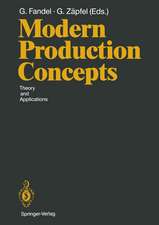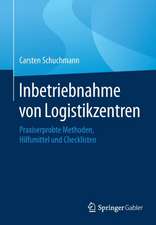Industrial Hygiene Simplified
Autor Frank R. Spellmanen Limba Engleză Paperback – 11 oct 2017
Preț: 746.95 lei
Preț vechi: 1023.21 lei
-27% Nou
Puncte Express: 1120
Preț estimativ în valută:
142.93€ • 149.63$ • 118.26£
142.93€ • 149.63$ • 118.26£
Carte tipărită la comandă
Livrare economică 05-19 aprilie
Preluare comenzi: 021 569.72.76
Specificații
ISBN-13: 9781598889628
ISBN-10: 1598889621
Pagini: 304
Dimensiuni: 178 x 254 x 32 mm
Greutate: 0.86 kg
Editura: Rowman & Littlefield
ISBN-10: 1598889621
Pagini: 304
Dimensiuni: 178 x 254 x 32 mm
Greutate: 0.86 kg
Editura: Rowman & Littlefield
Cuprins
Occupational Safety and Health Simplified for the Industrial Workplace
Frank R. Spellman
TABLE OF CONTENTS
Introduction
Chapter 1 Occupational Safety and Health Practice The Occupational Safety and Health Professional
Major Accident and Disasters Regulatory Influence Occupational Safety and Health Act (OSH Act) of 1970 OSHA Standards General Duty Clause of the OSH Act Final Note on Standards, Regulations, Laws, and Rules The Organization's Safety Policy¿The Ticket to Ride Workplace Safety and Health Provisions: The Legal Ramifications Case Study 1.1: A Stitch in Time Employee Training Contractor Training The Host-Contractor Safety Interface Case Study 1.2 The Bottom Line on Occupational Safety and Health in Industry Signal Words References and Recommended Reading
Chapter 2 Safety and Health Terminology and Hispanic Outreach Safety and Health Terminology Defining Accident
Terminology Hispanic Outreach Hispanic Outreach Tools English To Spanish OSHA Dictionary Reference and Recommended Reading
Chapter 3 Regulatory Requirements That Knock at the Door We Love to Hate Rules and Regulations Workers' Compensation Workers' Compensation Fraud Title 29 OSH Act Enforcement References and Recommended Reading
Chapter 4 Occupational Safety and Health Management Management Aspects of Hazard Avoidance The Right Way Hazard Avoidance Concepts Enforcement Approach Psychological Approach Engineering Approach
Analytical Approach Hazard Analysis Hazard Assessment Accident Investigation The Accident Investigation Process Statistics Behavior-Based Models Benchmarking Benchmarking: The Process Total Quality Management (TQM) The Bottom Line References and Recommended Reading
Chapter 5 Industrial Hygiene Concepts; Including Ventilation and Noise Controls Industrial Hygiene
Workplace Stressors Industrial Toxicology Industrial Health Hazards Control Methods Engineering Controls Ventilation Concepts of Ventilation Local Exhaust Ventilation General and Dilution Ventilation Industrial Noise Control
Determining Workplace Noise Levels Engineering Controls for Industrial Noise Industrial Vibration Control Administrative Controls Personal Protective Equipment (PPE) References and Recommended Reading
Chapter 6 Worker Right-To-Know A Failure to Communicate Better Communication with GHS for Worker Safety and Health Phase-In Period for the Hazard Communication Standard Major Changes to the Hazard Communication Standard Classification Label Changes Under the Revised HCS SDS Changes under the Revised HCS HazCom and the Occupational Safety and Health Professional Definition of HazCom Terms HazCom Audit Items References and Recommended Reading
Chapter 7 Emergency Response and Process Safety OSHA and Emergency Response Emergency Response Plan Typical Contents of an Emergency Response Plan Process Safety Management and Risk Management Planning Process Safety Management (PSM) PSM Definitions How the Standard Works; Its Application Specific PSM Requirements A Final Word on PSM Risk Management Planning Hazard Assessment Prevention Program Response Program RMP Definitions and Requirements RMP Program Levels RMP and PSM: The Similarities RMP and PSM: The Differences Summary of RMP Requirements The Bottom Line References and Recommended Reading
Chapter 8 Industrial Facility Design The Safe and Healthy Workplace Codes and Standards Plant Layout Illumination High Hazard Potential Work Areas Load-Bearing Components Beams Floors Columns Ladders Personal and Sanitation Facilities Emergency Eyewash/Showers Industrial Workplace Safety and Health Checklist References and Recommended Reading
Chapter 9 Ergonomics and Manual Lifting Elements of an Ergonomics Program Hazard Identification, Prevention, and Control Management Commitment and Employee Participation Medical Management Program Evaluation Training Back Injury Prevention Causes of Back Injuries Controlling On-The-Job Back Injuries Biomechanical Approaches Physiological and Psychological Approaches Prevention Administrative Controls Engineering Controls When to Employ Administrative and Engineering Controls Lower Back Pain and Standing Final Thoughts References and Recommended Reading
Chapter 10 Toxic Substances and Hazardous Wastes Fundamental Toxicology for the Industrial Workplace The Chemical World We Live In Sick Water Toxicology and Risk Toxicological Terms Other Pertinent Toxicological Definitions Classification of Toxic Agents Significant Chemical and Biological Toxins and Effects Factors Affecting Toxicity Classification of Toxic Materials Target Systems/Organs Commonly Affected by Toxins Carcinogens, Mutagens, and Teratogens Risk Assessment What Is Risk? Hazardous Waste Handling America: A Throwaway Society What is a Hazardous Substance? Hazardous Material Hazardous Substances Extremely Hazardous Substances Toxic Chemicals Hazardous Chemicals Hazardous Wastes EPA-Listed Hazardous Wastes Where Do Hazardous Wastes Come From? Hazardous Waste Legislation Resource Conservation and Recovery Act CERCLA OSHA¿s Hazardous Waste Standard Hazardous Waste Safety Program References and Recommended Reading
Chapter 11 Noise Control OSHA's Hearing Conservation Requirements Occupational Noise Exposure Hearing Conservation: The Written Program Monitoring: Sound Level Survey Audiometric Testing Hearing Protection Training Safe Work Practices Recordkeeping Administrative and Engineering Controls References and Recommended Reading
Chapter 12 Fire, Welding, and Hot Work Safety Fire Safety OSHA and Fire Safety Fire Prevention and Control Fire Protection Using Fire Extinguishers Flammable and Combustible Liquids Welding Safety Programs General Welding Safety Fire Prevention and Protection: Welding Safety Program Elements Managers and Supervisors Personal Protective Equipment (PPE) and Other Protection Railing and Welding Cable Eye Protection Protective Clothing Confined Spaces Ventilation and Health Protection Arc Welding Safety Safe Work Practice: Arc Welding Gas Welding and Cutting Safety Safe Work Practice: Gas Welding and Cutting Cutting Safety Hot Work Permit Procedure Fire Watch Requirements References and Recommended Reading
Chapter 13 PPE, First Aid, and Thermal Hazards Personal Protective Equipment (PPE) Case Study 13.1 OSHA's PPE Standard OSHA's PPE Requirements Hazard Assessment and PPE PPE Training Requirement Respiratory Protection Respirators Defined Respiratory Protection Program Responsibilities Definition of Terms Types of Respirators Chemical Cartridge Respirators Airline Respirators (Helmets, Hoods, and Masks), Cascade-fed, or Compressor-fed Self-contained Breathing Apparatus (SCBA) Respirator Selection and Distribution Procedures Respirator Inspection, Maintenance, Cleaning, and Storage Inspection Maintenance Cleaning Storage Respirator Fit-Testing Medical Surveillance Training Documentation Procedures Respirator Program Evaluation First Aid in the Workplace Thermal Hazards Thermal Comfort The Body's Response to Heat Heat Definitions Heat Disorders and Health Effects Heat Stroke Heat Exhaustion Heat Cramps Heat Flashes Heat Fatigue Cold Hazards References and Recommended Reading
Chapter 14 Confined Space Entry OSHA's Confined Space Entry Program Confined Space Entry: Definitions Evaluating the Workplace The Permit-Required Confined Space Written Program Permit-Required Confined Space Entry: Equipment Testing and Monitoring Equipment Ventilating Equipment Personal Protective Equipment (PPE) Lighting Barriers and Shields Ingress and Egress Equipment: Ladders Rescue Equipment Other Equipment Pre-Entry Requirements Permit System Permit Requirements Confined Space Training Training Requirement for Confined Space Entry Workplace Confined Space Training Program Confined Space Certification Exam Assignment of On-Site Personnel Duties of Authorized Entrants Duties of the Attendant Duties of Entry Supervisors Confined Space Rescue Rescue Services Rescue Service Provided by Outside Contractors Non-Entry Rescue Alternative Protection Methods Hierarchy of Permit-Required Confined Space Entry Procedures for Atmospheric Testing Testing Procedures Air Monitoring and OSHA Other OSHA Permit-Required Confined Space Audit Items References and Recommended Reading
Chapter 15 Lockout/Tagout OSHA's Lockout/Tagout Lockout/Tagout Key Definitions Lockout/Tagout Procedure (A Sample) Special Conditions: Logout/Tagout Removal when Authorized Employee Is Absent Methods of Informing Outside Contractors of Procedures References and Recommended Reading
Chapter 16 Electrical Safety Control of Electrical Hazards Grounding and Bonding Grounding and Bonding Requirements Summary of Safety Precautions for Electrical Circuits References and Recommended Reading
Chapter 17 Fall Protection Fall Protection: Defining the Problem Physical Factors at Work in a Fall Slips: Falls on the Same Level Trips: Falls on the same Level Stair Falls: Falls on One of More Levels Elevated Falls: Falls from One Level to Another Fall Protection Measures Fall Protection Policy References and Recommended Reading
Chapter 18 Pressure Vessel Safety High Pressure or Low Pressure: Just as Deadly What Is a Pressure Vessel? OSHA Requirements Pressure Definitions Pressure Vessel Safety Program Controls Written Safe Work Practices Training Proof Testing Pressure Relief Systems Required Inspections Pressure Vessel Safety Factor/Margin References and Recommended Reading
Chapter 19 Rigging and Material Handling Safety Rigging Safety Written Rigging Safety Program Fundamental Engineering Concepts for Rigging Resolution of Forces Slings Rated Sling Loads Inclined Plane Safety: Ropes, Slings, Chains Rigging Equipment and Attachment: General Rope Slings Wire Rope Chains and Chain Slings Training Proof Testing Rigging Equipment Inspections Safe Work Practices References and Recommended Reading
Chapter 20 Radiation Safety Radiation Safety in the Workplace Complying with OSHA's Radiation Safety Requirements Controls Training References and Recommended Reading
Chapter 21 Machine Guarding Purpose of Machine Guarding Basics of Safeguarding Machines Safeguarding Defined Types of Machine Safeguards Required Mechanical Hazards: Motions and Actions Common Safeguarding Methods Guards Devices Feeding and Ejection Methods Safeguarding by Location/Distance Miscellaneous Safeguarding Accessories Safe Work Practices Safe Work Practices: Machine Guarding Training, Enforcement, and Inspections Machine Hazard Warnings Employee Clothing and Jewelry Lockout/Tagout References and Recommended Reading
Chapter 22 Worksite Security Safety and Upgrading Security What Not to Do: Judge by Appearances What to Do: The Threat Assessment Team Hazard Assessment Workplace Security Analysis Workplace Survey What to Implement: Hazard Control and Prevention Buildings, Workstations, and Areas Security Equipment Work Practice Controls and Procedures Don't Be A Stranger Checklist Questions for Industrial Facilities Is Your Current System Adequate? Security and the Industrial Setting What Does Facility and Security Entail? Good Fences Makes Good Neighbors Protection from Theft Protection of Equipment and Data Protection from Harm References and Recommended Reading
Chapter 23 Violence in the Industrial Workplace Media-Intensive Events Case Study 23.1: An Obsession with Linda What is Workplace Violence? Why Does Workplace Violence Occur? What to Do Reporting Workplace Violence Preventing Potential Problems Conflict Resolution Early Warning Signals Protecting Personnel: Control for Workplace Violence Is Your Facility Safe and Secure? Recommended Personal Safe Work Practices for External Violence References and Recommended Reading
Chapter 24 Record keeping Too Many Is not Always Enough OSHA-200/300 Log Training and Inspection Records Medical Records and Other OSHA-Required Records The Bottom Line References and Recommended Reading
Appendix: Sample Confined Space Certification Exam
Notă biografică
By Frank R. Spellman
Descriere
Industrial Hygiene Simplified is ideal for those needing a refresh on industrial hygiene concepts and practices they may not use regularly, as well as those practitioners preparing for the Certified Industry Hygiene (CIH) exam.























